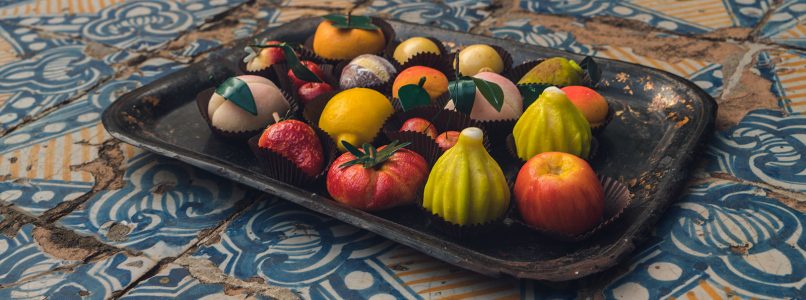The history and ancient convent recipe of the famous Sicilian dessert prepared on the occasion of the Feast of the Dead on 2 November
The multicolored ones fruit of martorana are the typical dessert prepared in Sicily for the solemn Feast of the Dead on November 2, or the commemoration of the dead, a very heartfelt celebration on the island. They take their name from the aristocrat Eloisa Martorana, founder in 1194 of the third Benedictine monastery of Palermo – in 1876 it was expropriated by the state and today houses the University's Department of Architecture while the adjacent church of Santa Maria dell'Ammiraglio, called Martorana, is still in operation – which boasted al inside the most beautiful garden in the city, full of fragrant roses, orange, cedar and lemon trees that softened the air with a delicate but intense aroma of orange blossom.
The legend
As Maria Oliveri – author of the volume tells us The secrets of the cloister, stories and recipes of the monasteries of Palermo (the Genius Publisher) – legend has it that martorana fruit was invented by the nuns of Martorana. One day at the end of October the announcement of an unexpected visit from the king arrived at the convent, curious to see with his own eyes the wonderful garden of the Benedictines that was so talked about in the Kingdom. News that immediately threw the mother superior and all the nuns into despair: in autumn, in fact, the trees and rosebushes of the cloister were sad and bare, without flowers and without fruit. It was the cook nun who found a solution: she had invented a sweet made from almonds and honey, to offer to the king, soft and easy to manipulate. It had to be allowed to air dry for a couple of days and then it was immediately ready to serve. The original idea was to make, with the dough, some fruits painted so well that they look like real citrus fruits to hang between the branches of trees. The long-awaited day of the sovereign's visit arrived and once he entered the cloister, after a pause for reflection that seemed to last an eternity to the nuns, the king exclaimed: "I must pay you my compliments, mother. Your garden is the only one in the whole city to have trees so full of ripe fruit. You almost want to taste them . He tore off a large orange to peel it and only then did he realize it wasn't a fruit. Overwhelmed by the sweet deception he burst into a great laugh. "These almond and honey fruits were made in your honor, Majesty," the superior admitted pleased. "They are sweets worthy of a king, they are really gifts, we could call them royal pasta!", Added the Grand Chancellor who couldn't wait to taste one. The king then promised to return in the spring, to admire the blooming roses of the Benedictines and before leaving he had a small bundle prepared full of those greedy fruits.
Recipe
With the feast of the dead approaching, the windows of the pastry shops in Palermo begin to fill up with the colorful martorana fruit, surely to be counted among the most iconic sweets of the Sicilian tradition, so much so that they are available at all times of the year. Below we present the ancient convent recipe – recovered by Maria Oliveri and published in her book – to prepare them at home in view of November 2
Ingredients
1 kg of sweet almonds
800 g of sugar
600 ml of water
4 bitter almonds
Method
Blanch the almonds in boiling water, peel and finely chop. Separately, in a large pan, dissolve the sugar with the water. Bring to a boil, stirring constantly. When the sugar "spins", turn off the heat, pour in the finely chopped almonds in one go and mix quickly, mixing everything together. Pour onto a pastry board and allow to cool. Shape fruit as you like, with your hands or with plaster molds: mandarins, lemons, chestnuts, pears… Decorate with food colors and polish with gum arabic.
This recipe has already been read 1070 times!
